21 Best Plants and Flowers to Grow In Utah (With Pictures)
-

- Last updated:
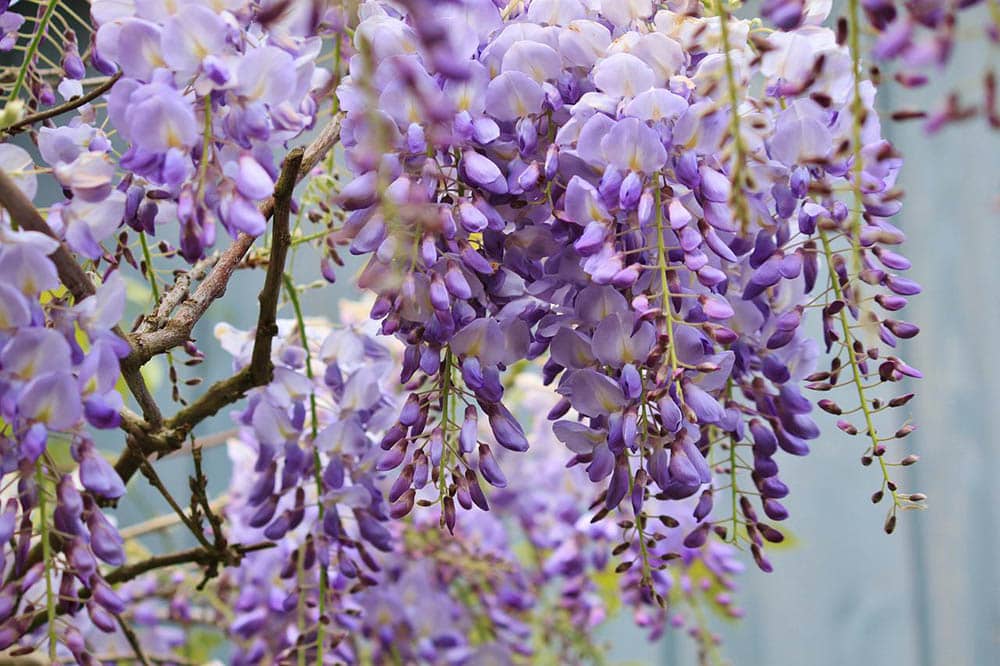
Located in the mountain western part of the USA, Utah has an incredibly rich and diverse flora. It is home to some of the most beautiful trees, bushes, and, of course, flowers. However, Utah has an arid climate. So, if you have a beautiful garden in your backyard and want to add some new, exciting flowers and plants, you need to take the environment and the weather into consideration.
Don’t have enough time to do the picking? Well, you’re in luck because we’ve done all the heavy lifting for you! The following list includes the best plants and flowers equally resilient, easy to maintain, and beautiful. First, we’ll take a close look at 10 must-have perennials and then check out 11 lovely annuals for your Utah garden. Let’s get to it!
The 21 Best Plants and Flowers to Grow In Utah
Perennials
What’s the definition of a perennial? It’s a plant or flower that doesn’t die. Instead, they regrow next year. If the rootstock is intact, the blossoms will flourish once again in spring. Now, the blooming season for perennials isn’t very long (they bloom in spring/summer and fade in autumn/winter) so keep that in mind. Here are the best perennials to grow in the dry, windy state of Utah:
1. English Lavender

| Botanical Name | Lavandula angustifolias |
| Soil | Well-drained, sandy (pH 6.5–7.5) |
| Sun | Full sun |
| Hardiness Zone | 5–10 |
| In Bloom | Mid-June to late September |
Unless you live in the coldest mountainous regions of Utah, the English lavender will flourish in your garden and fill it out with a lovely smell. Keep it away from wet/water-logged areas. Make sure it’s planted in well-drained, sandy soil and that it gets at least 5 hours of sun per day. When you do that, lavender will bloom in mid-June and last up to September until the cold days arrive.
Depending on the species, the flowers will either be deep or pale purple and very easy to maintain. Just trim them a little bit, and that’s it!
2. Black-Eyed Susan

| Botanical Name | Rudbeckia hirta |
| Soil | Well-drained, clay, foam (pH 6.8–7.7) |
| Sun | Full sun/partial shade |
| Hardiness Zone | 3–10 |
| In Bloom | June to early September |
Native to North America, the Black-Eyed Susan is one of the most popular and invasive wildflowers on the continent. It looks a lot like the coneflower but has bright, eye-catching yellow petals; plus, the head is much darker. Sadly, Susan’s lifespan is a bit shorter. On the bright side, it easily handles a wide range of hardiness zones and grows both in full sun and partial shade.
As long as the soil is well-drained (foam and clay work too), you’ll see it bloom in late June, with the first butterflies flying over for the nectar.
3. Tickseed/Coreopsis
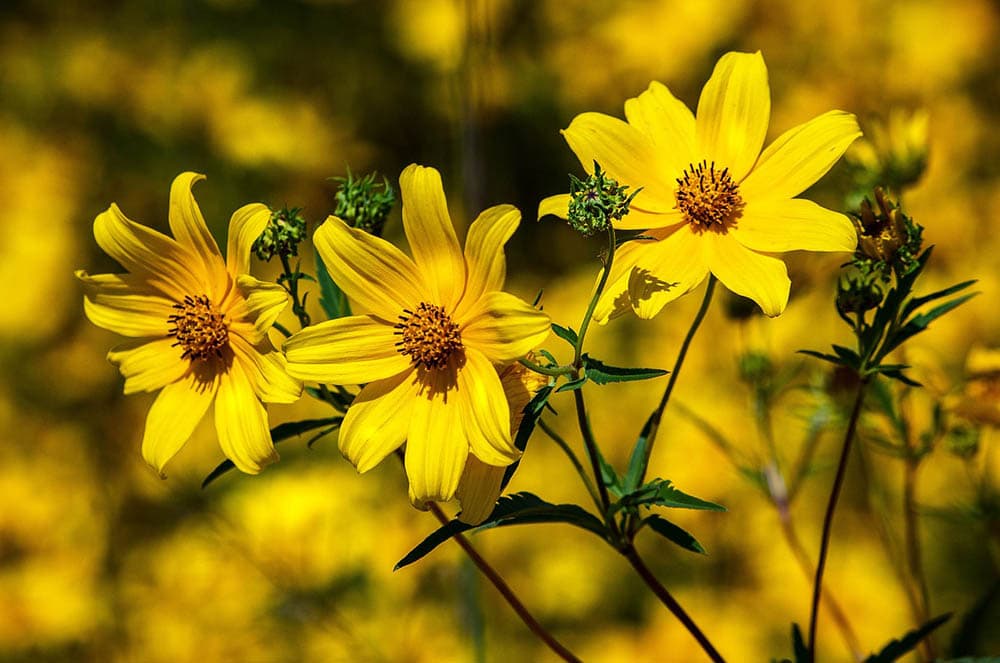
| Botanical Name | Coreopsis spp. |
| Soil | Well-drained, loamy, and sandy (pH 5.5–6.5) |
| Sun | Full sun |
| Hardiness Zone | 3–10 |
| In Bloom | Summer through fall |
As far as the brightest flowers to plant in Utah go, the Tickseed is right there on top of the list. The petals, in turn, are shaped like an octagon and grow best in full sun. The soil needs to be well-drained and a bit sandy and loamy. If you take care of that, this tall flower (12–18 inches) will take over the garden in early-to-mid summer and last through fall. Tickseed belongs to the 3–10 hardiness zones, which makes it perfect for Utah.
4. Daylily

| Botanical Name | Hemerocallis |
| Soil | Well-drained, moist, organic (pH 6.0–6.5) |
| Sun | Full sun/partial shade |
| Hardiness Zone | 3–10 |
| In Bloom | Early June through September |
Here, we have another wildly popular flower that grows in Utah. It easily handles harsh conditions (like extreme heat, drought, and cold weather) and is very easy to maintain. Pest- and disease-free, these flowers can grow without any help from the gardener’s side. With that said, if you want to see them flourish, make sure that the soil is not only well-drained but also moderately moist and organically rich.
As for the sun, daylilies like full exposure, but they grow in partial shade as well. The blooming season starts in summer (early June) through early fall.
5. Anemone

| Botanical Name | Anemone |
| Soil | Well-drained, moist, composted (pH 6.0–7.5) |
| Sun | Light shade/sun |
| Hardiness Zone | 3–8 |
| In Bloom | Mid-spring to fall |
The pink petals, green-orange center, and (relatively) tall stems make anemones a sight for sore eyes. They thrive in well-drained and composted soil that’s reasonably moist. In contrast to most flowers on the list, they aren’t big fans of the sun and prefer to grow in light shade. So, when can you expect them to bloom? Unless it’s a particularly cold year, anemones will blossom in April–May and last through most days of fall.
6. Butterfly Weed
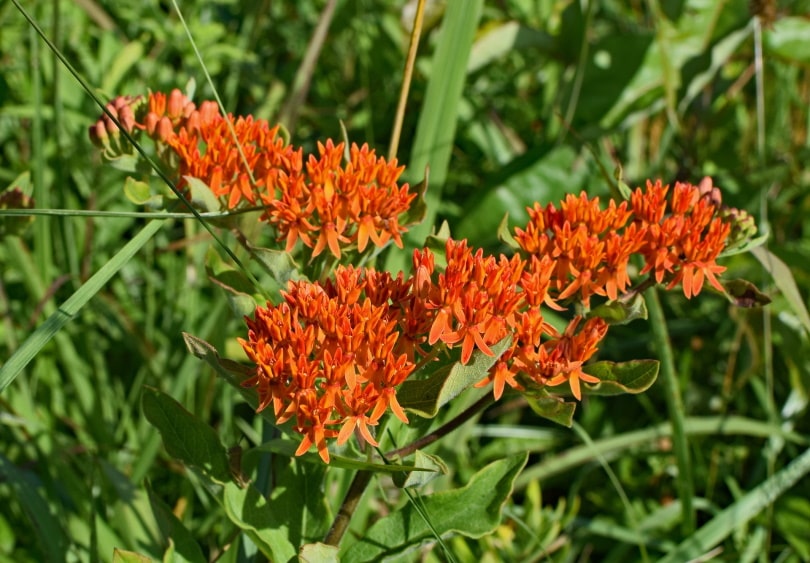
| Botanical Name | Asclepias tuberosa |
| Soil | Poor, sandy, dry (pH 6.0–7.0) |
| Sun | Full sun |
| Hardiness Zone | 3–9 |
| In Bloom | Late spring to August |
Don’t worry: these flowers don’t look anything like a weed. Instead, they have a bell-like shape and will instantly give your garden an exotic touch. They are native to Utah, though, and that’s great news because you won’t have to worry about the hardiness zone (3–9) or the soil. Ideally, it should be dry, sandy, and poor, with no fertilizer in the mix.
May to late summer—that’s when the butterfly weed blooms, given it gets enough sun during the day (at least 4–5 hours).
7. Bee Balm
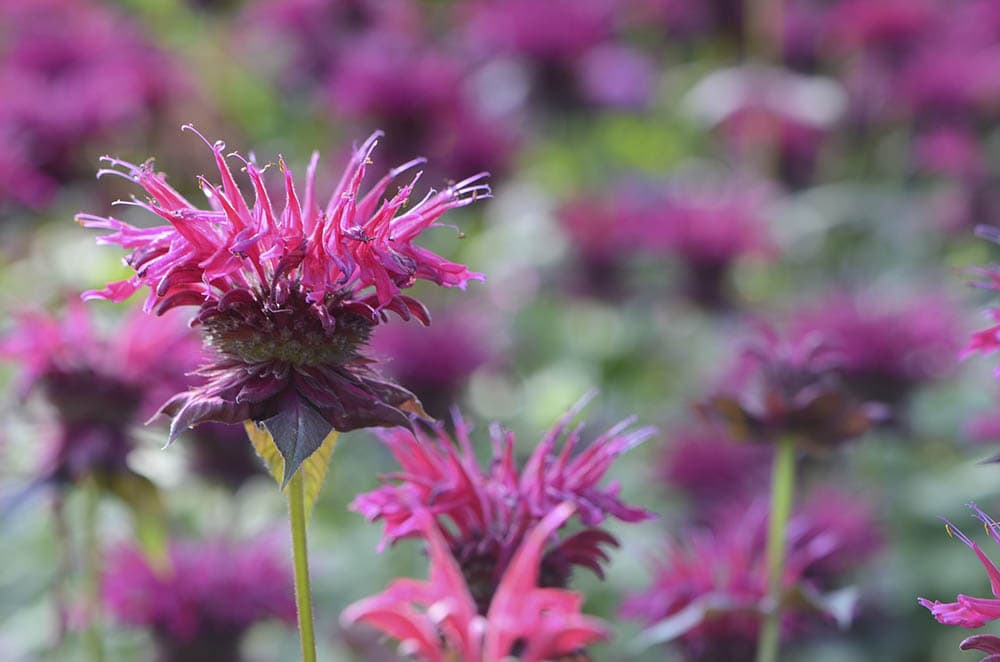
| Botanical Name | Monarda |
| Soil | Moist, rich (pH 6.0–7.0) |
| Sun | Full sun/partial shade |
| Hardiness Zone | 3–9 |
| In Bloom | July through summer |
Are you a big fan of hummingbirds? Then you might want to plant bee balms in your garden. The reason: these flowers are known to attract them, along with butterflies and bees. Native to the North American region, they can be either pink or red. Mostly, bee balms are found in woodlands and are incredibly drought-resistant. Still, make sure they get 3–4 hours of sun.
If the soil is organically rich and moist, you will see the first blossoms as early as July, and they’ll “stick around” through summer.
8. Chrysanthemum
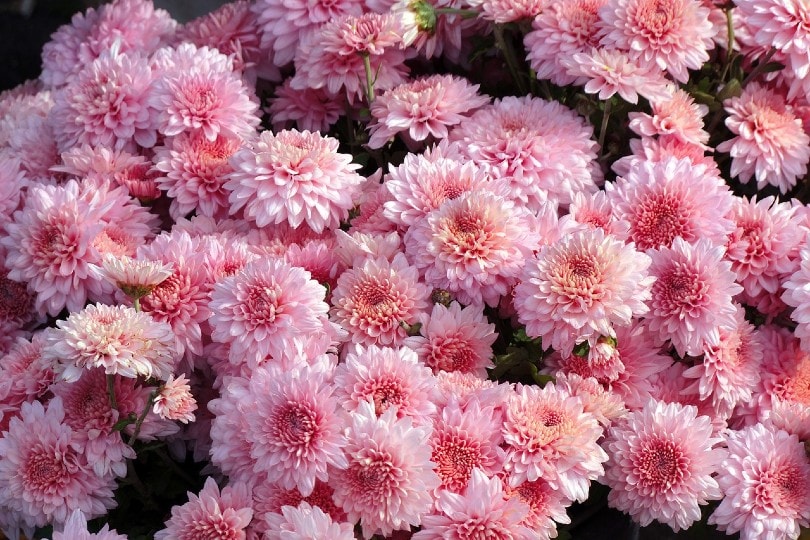
| Botanical Name | Chrysanthemum |
| Soil | Well-drained, sandy (pH 6.5) |
| Sun | Full/partial sun |
| Hardiness Zone | 5–9 |
| In Bloom | Late summer through fall |
Very few flowers are as captivating as chrysanthemums. Also known as “mums”, they are available in a wide range of colors—pink, white, purple, orange, and red—and come in different shapes and sizes. More importantly, these flowers are drought-resistant, flourish in well-drained, sandy soil, and blossom in partial sun (even though 6–8 hours of sun exposure would be best). Chrysanthemums bloom in August and live through most of the fall.
Easy to grow, they are usually planted in a small group. Or you can fill out an entire field—it’s totally up to you!
9. Wisteria
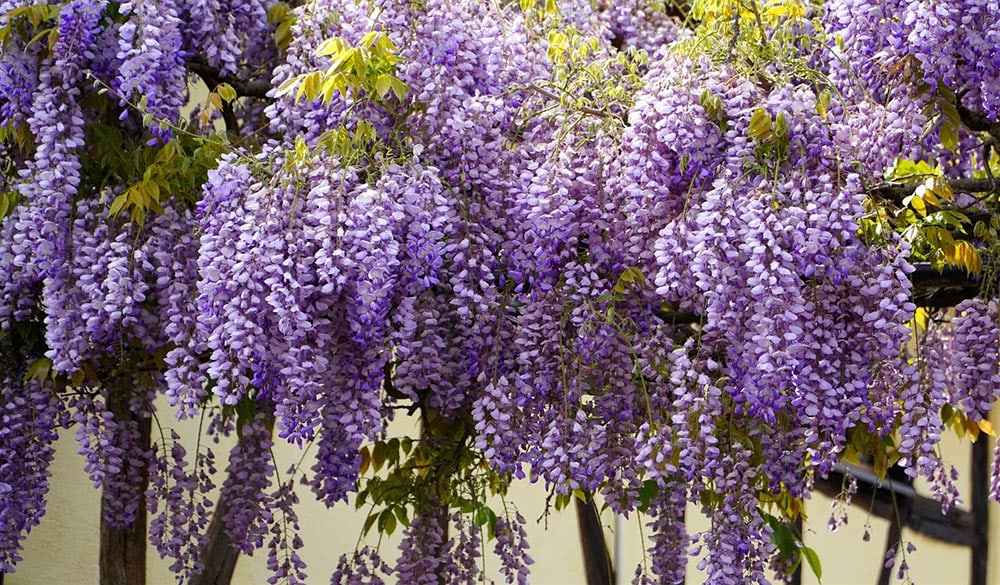
| Botanical Name | Wisteria |
| Soil | Moist, fertile (pH 6.0–7.0) |
| Sun | Full sun |
| Hardiness Zone | 5–9 |
| In Bloom | May through summer |
Sometimes referred to as a tree, this flowering plant is perfect for a Utah garden. This is especially true if you’ve got an arbor or trellis: Wisteria does a great job of climbing and twining. And it is hardy and resilient enough to not only survive but also prosper in Utah. As an exterior plant, it benefits from full exposure to the sun.
The soil needs to be moist, and we recommend adding some fertilizer to help with the growth. Wisteria is in bloom in mid-May and lives through summer (and even early fall).
10. Iris
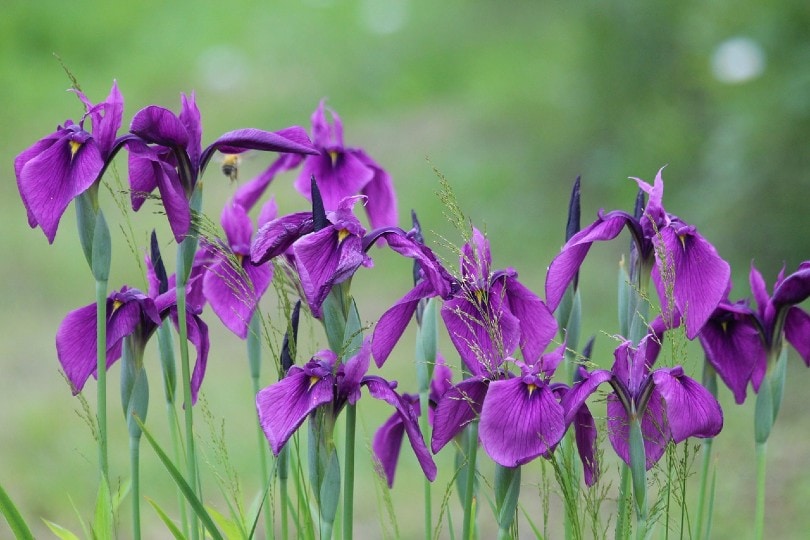
| Botanical Name | Iris |
| Soil | Well-drained, fertile (pH 6.0–8.0) |
| Sun | Full sun |
| Hardiness Zone | 5–9 |
| In Bloom | Later spring/summer to fall |
Rainbow in Greek, the Iris flower has quite an unusual shape that attracts bees, birds, and gardeners from all over the globe. It represents wisdom and courage and blooms in late spring (mid-May) to flourish for most of the fall. A quick note: The iris can grow in the shade, but you won’t see any flowers. For that, see that it gets 5–6 hours of sun and that the soil is fertile and well-drained.
Hardy and long-living, iris flowers are low-maintenance and quick to grow, just like most entries on today’s list.
Annuals
Plants and flowers that grow in spring, blossom, and die when the temperature drops below frost (which equals 32ºF) are called annuals. The biggest downside of these flowers compared to perennials is that they don’t grow back next season. To counter that, annuals are bright, vibrant, and sprout rapidly. That makes them a great choice for background planting, borders, garden pots, and beds.
Take a look at our top-11 picks for Utah. These flowers/plants are resilient, drought-resistant, and take little effort in maintenance:
1. Ageratum
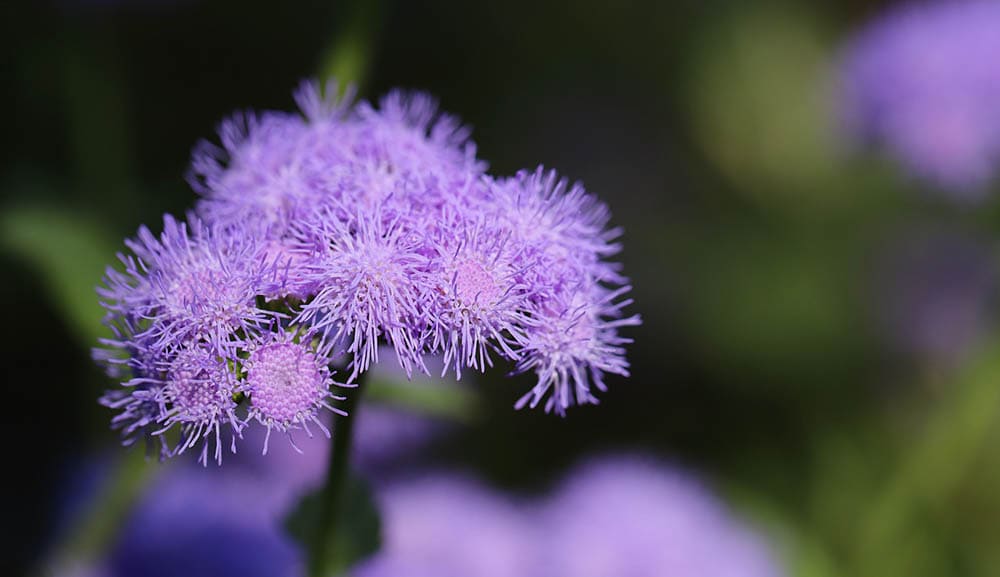
| Botanical Name | Ageratum |
| Soil | Well-drained, fertilized (pH 5.0–6.0) |
| Sun | Full sun/partial shade |
| Hardiness Zone | 2–10 |
| In Bloom | Late spring through fall |
Also known as the floss flower or the white weed, ageratum is famous for its uniquely shaped flowers. Mostly blue, they can also be pink, red, or white. To cultivate fast growth, the soil should be moderately fertilized and well-drained. Ageratums blossom in full sun but grow in partial shade as well. Yes, these flowers are almost maintenance-free and bloom in later spring.
Thanks to an above-average lifespan, they survive through the fall in Utah and reach 8 inches in height (or much higher, depending on the species).
2. Cockscomb

| Botanical Name | Celosia argentea |
| Soil | Well-drained, moist, loamy (pH 6.0–7.0) |
| Sun | Partial shade |
| Hardiness Zone | 9–11 |
| In Bloom | Summer to early fall |
Very few flowers/plants on planet Earth are as glorious and gracious as cock’s comb. The unique shape and bright hues of red, yellow, pink, and orange make it a popular choice for American gardeners. Oh, and yes, it is named after its striking resemblance to a rooster’s comb. This flower prefers partial shade and moist, loamy soil. With that said, cock’s comb struggles in colder-than-average climates—keep that in mind.
3. Treasure Flower

| Botanical Name | Gazania |
| Soil | Well-drained, sandy (pH 5.5–7.5) |
| Sun | Full sun |
| Hardiness Zone | 9–10 |
| In Bloom | Late spring to late summer |
Native to the African region, the treasure flower is quite resilient for an annual and won’t take much effort to grow in Utah. As long as it gets enough sun (6–8 hours) and sandy, well-drained soil, you will see it blossom in later spring and last to late August/early September. The African daisy (another name for it) features striped petals and a stunning combination of bright yellow with dark-brown stripes.
4. Lantana
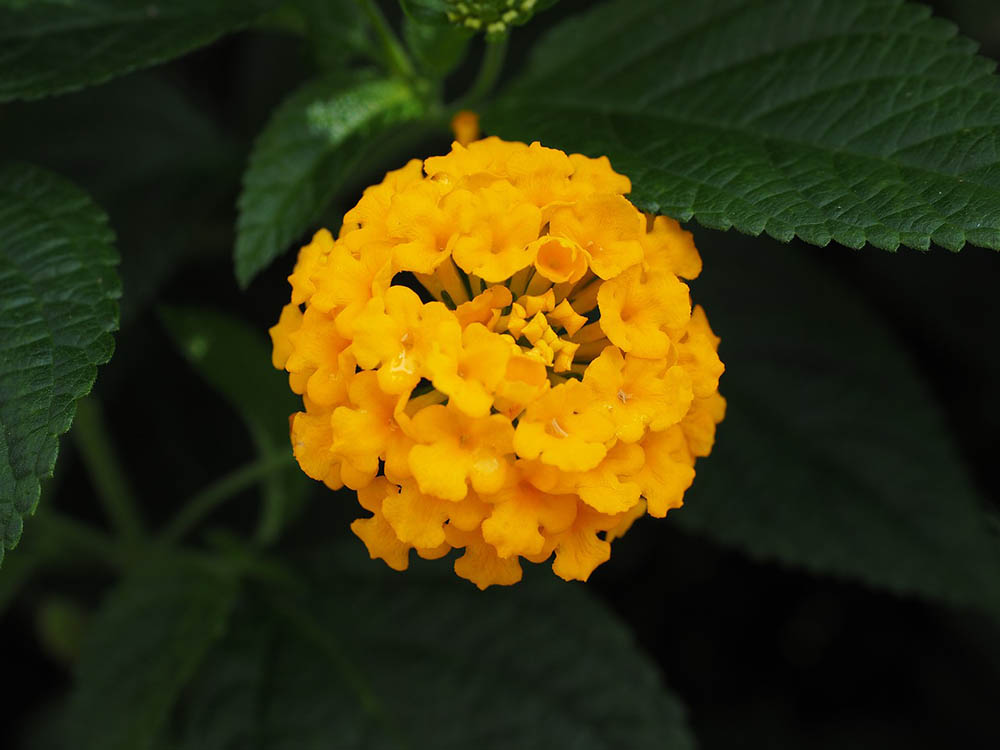
| Botanical Name | Lantana Camara |
| Soil | Well-drained, composted (pH 6.0–7.0) |
| Sun | Full/partial sun |
| Hardiness Zone | 9–11 |
| In Bloom | Early summer through October |
Sometimes classified as a shrub, lantana is a genus of 150+ flower species that are native to the Americas (the tropical areas, to be exact). That’s why it grows best in high hardiness zones and benefits greatly from full sun. Composed and well-drained soil plus moderate watering is all lantana needs to thrive. This usually happens in early summer and the flower survives through mid-fall.
The round clusters of brightly-colored petals of various shapes and colors—that’s what makes lantana so easy to recognize. If you’re a fan of hanging buckets, this flower will be a great pick.
5. Marigold
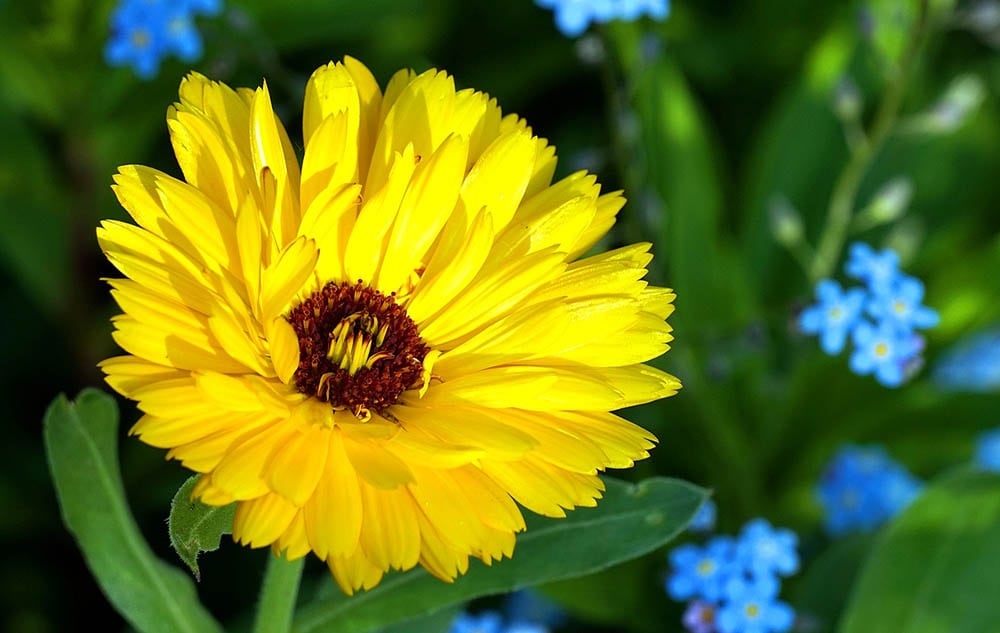
| Botanical Name | Tagetes |
| Soil | Well-drained, loamy (pH 6.0–7.0) |
| Sun | Full sun |
| Hardiness Zone | 2–11 |
| In Bloom | Early summer until frost |
In some ways, marigold is similar to lantana. We’re talking about the petals, the colors, and the height. With that said, this flower is much more colorful and can turn even the least exciting garden into a beauty. It’s also important to mention that marigold flourishes both in colder and hotter climates and attracts butterflies, bees, and ladybugs. It’s still recommended to plant it in a spot where it can get 4-5 hours of sunlight, though.
If the soil is drained and loamy, you’ll get to enjoy the very first blossoms in early June.
6. Salvia
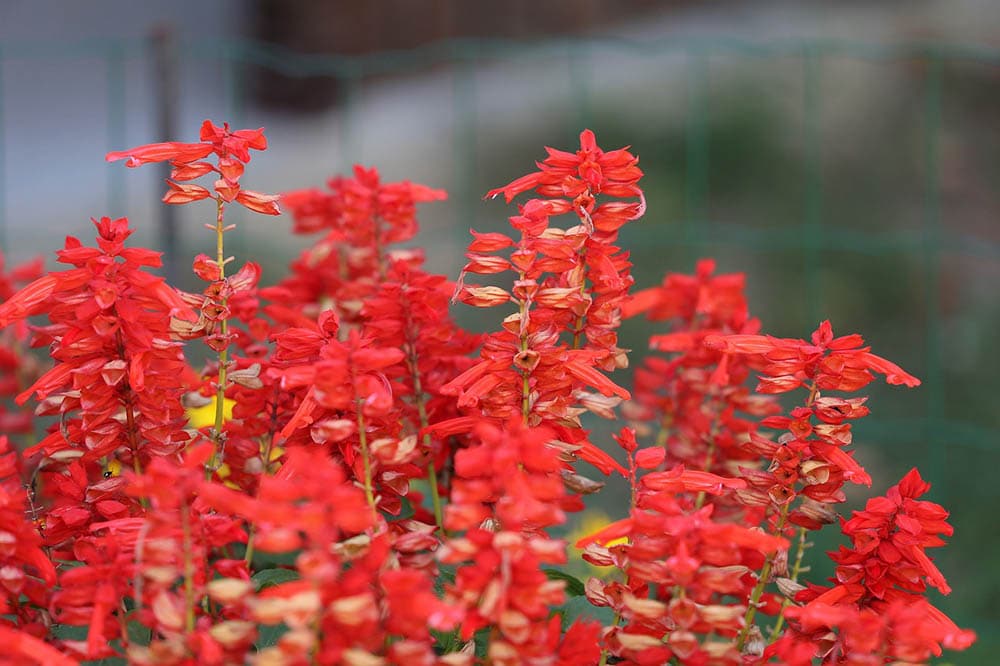
| Botanical Name | Salvia |
| Soil | Well-drained (pH 5.5–6.5) |
| Sun | Full sun/Partial shade |
| Hardiness Zone | 3–8 |
| In Bloom | Early July to fall |
This right here is another annual that can grow all over the fine state of Utah, including the cold mountainous areas. Partial shade, well-drained soil, and medium water usage (too much of it will rot the roots) make Salvia one of the easiest annuals to grow in Utah. If you have lots of flowers that bloom in spring and are looking for something for the summer, this could be exactly what you need.
7. Sunflower
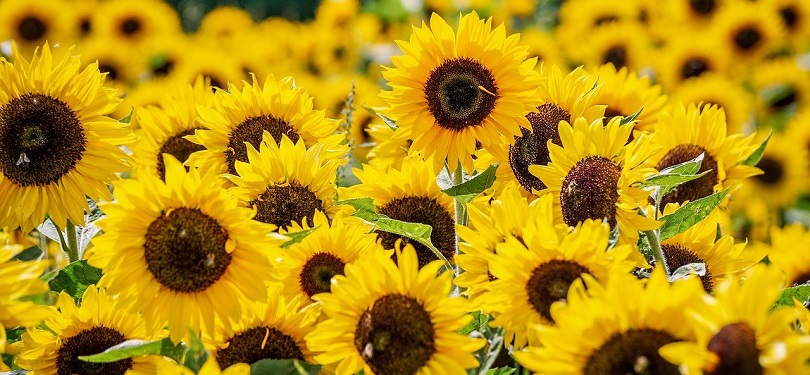
| Botanical Name | Helianthus |
| Soil | Well-drained, loamy, sandy (pH 6.0–7.5) |
| Sun | Full sun |
| Hardiness Zone | 6–9 |
| In Bloom | Summer through fall |
Just like the name suggests, this flower looks a lot like the sun. It’s a wild plant, by the way, meaning it doesn’t rely heavily on the gardener to grow and flourish. Still, to take proper care of it, sandy, loamy, and, of course, well-drained soil will be ideal. Full exposure to the sun is important as well. Expect the sunflower to bloom in summer (usually in late June) and live until late fall or the first frost.
8. Verbena
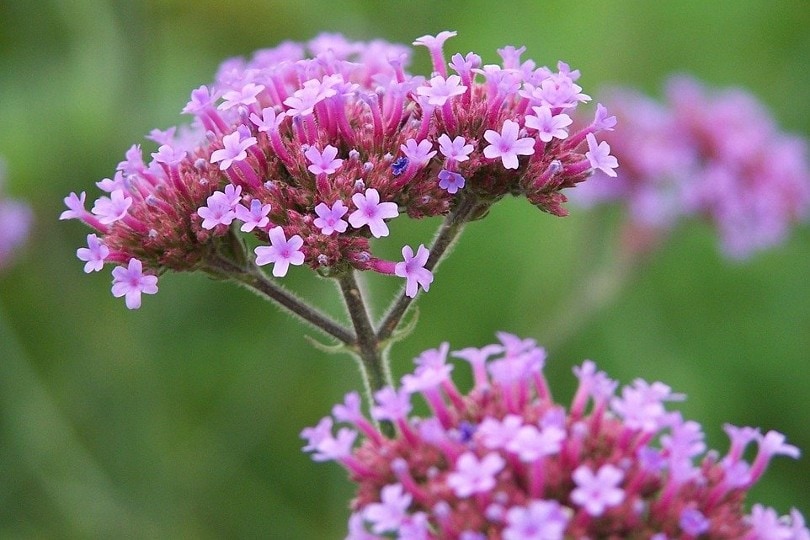
| Botanical Name | Vervain |
| Soil | Well-drained (pH 5.8–7.2) |
| Sun | Full sun |
| Hardiness Zone | 7–10 |
| In Bloom | Mid-July to September |
Do you live in one of the hottest areas of Utah? Then Verbena could be a great pick. It easily handles scorching heat and prospers in full sun. Along with that, it doesn’t need any fancy fertilizers to grow. The soil must be well-drained, though. Verbena is native to the Americas and can also be perennial, depending on the species. The flowers aren’t very big, but the gracious petals (blue, pink, or purple) make up for that.
As for the blooming season, it starts in July and lasts until early September.
9. Four o’clock
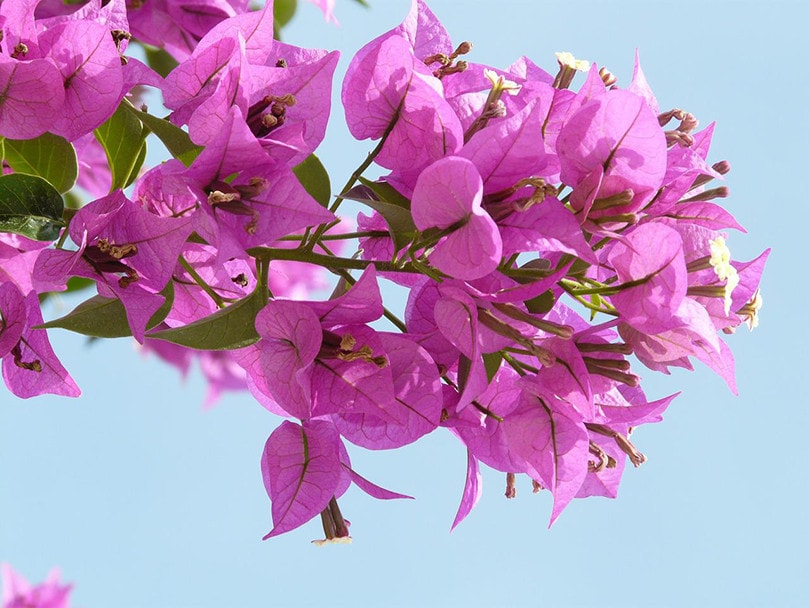
| Botanical Name | Mirabilis jalapa |
| Soil | Well-drained, moist, organic (pH 6.5–7.8) |
| Sun | Full sun/partial shade |
| Hardiness Zone | 7–10 |
| In Bloom | Late summer/fall until frost |
This is one of the most ancient annual flowers known to mankind and dates back to the Aztecs. Known as the marvel of Peru in South America, it behaves a lot like a shrub, spreading rapidly. However, the stems aren’t at all resilient and break easily. To make sure this wonderful flower doesn’t fade, plant it in moist, organic, and well-drained soil and in an area with as much sunlight as possible.
10. Cosmos

| Botanical Name | Cosmos sulphureus |
| Soil | Well-drained, slightly acidic (pH 6.5–7.0) |
| Sun | Full sun/partial shade |
| Hardiness Zone | 3–10 |
| In Bloom | Mid-June summer until frost |
It’s safe to say that for a summer garden, the cosmos flower is a must-have. Available in various shades and sizes, it grows really fast and can fill out an entire backyard with pink, red, and white colors. You can plant it as soon as the danger of frost is gone. That way, the cosmos flower will blossom in late spring or early summer. Full sun is preferred, although the flower blooms in partial shade as well.
11. Rose Moss

| Botanical Name | Portulaca grandiflora |
| Soil | Well-drained, sandy, or loamy (pH 5.6–7.0) |
| Sun | Full sun |
| Hardiness Zone | 2–11 |
| In Bloom | Summer until first the frost |
Worried that your garden isn’t moist enough, and there’s always way too much sun in the area? Then the moss rose will fit right in. First, it’s a tough flower, one that isn’t “afraid” of extreme temperatures. Second, it grows in all kinds of soil, including drained, moist, and poor. Cactus-like, vivid, and colorful, it blooms in summer and doesn’t fade until the first frost.
In Conclusion
If you live in Utah, you already know that the local climate can be a bit tough for growing plants/flowers. The summers are mostly dry and hot, while the winters are rather harsh. That’s why you need to pick flowers that blossom and flourish in low humidity and extreme heat. On today’s list, we’ve got plenty of perennials and annuals that are perfectly capable of growing in drought and above-average temperatures.
Plus, most of them require very little maintenance and don’t need expensive fertilizer products to flourish. The rich, head-turning colors and shapes, along with the lovely scents, will be a great addition to your garden in Utah. So, get to planting, and we’ll see you soon!
Featured Image Credit: cocoparisienne, Pixabay
Contents


